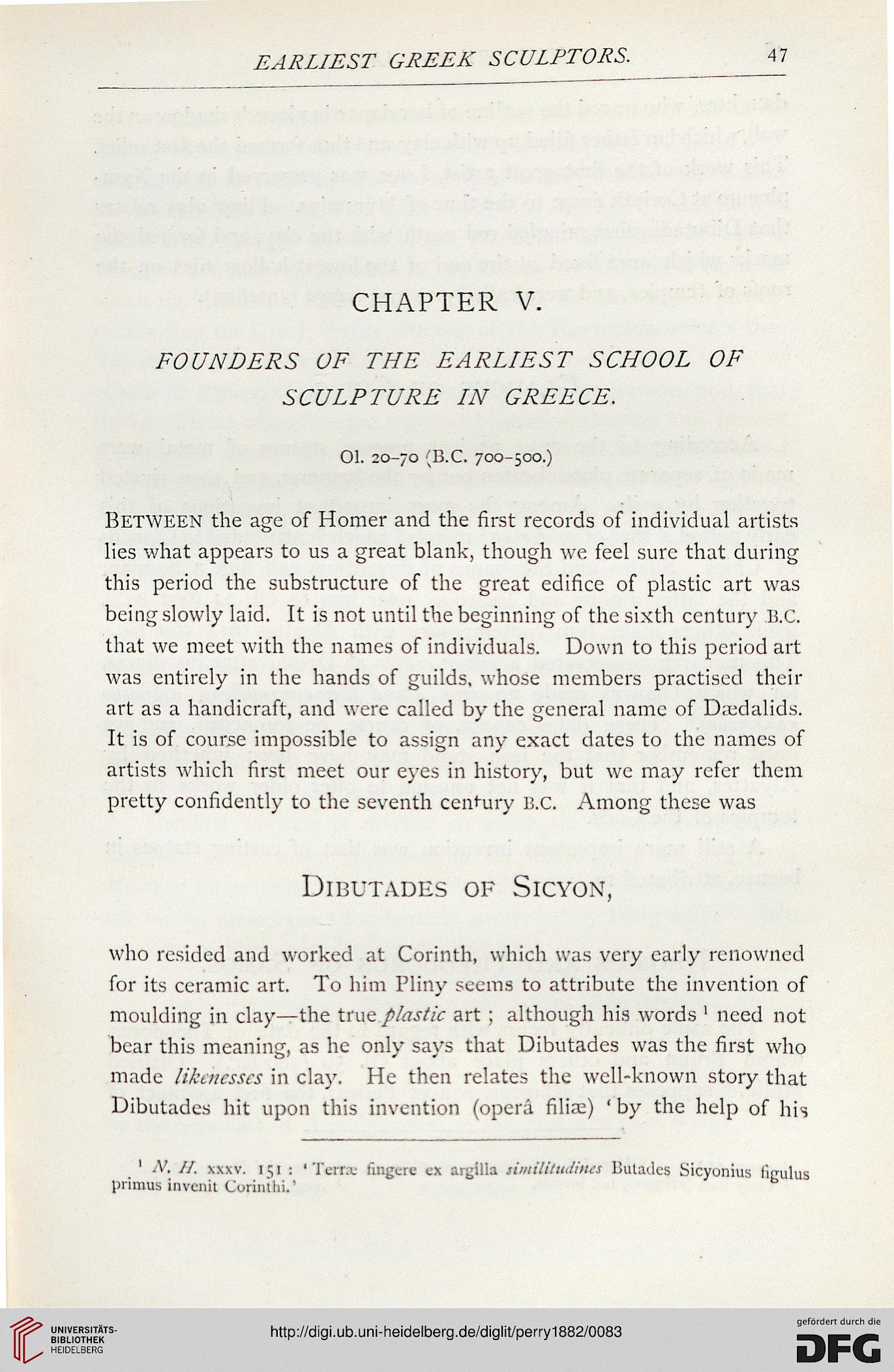EARLIEST GREEK SCULPTORS.
47
CHAPTER V.
FOUNDERS OF THE EARLIEST SCHOOL OF
SCULPTURE IN GREECE.
01. 20-70 (B.C. 700-500.)
Between the age of Homer and the first records of individual artists
lies what appears to us a great blank, though we feel sure that during
this period the substructure of the great edifice of plastic art was
being slowly laid. It is not until the beginning of the sixth century b.c.
that we meet with the names of individuals. Down to this period art
was entirely in the hands of guilds, whose members practised their
art as a handicraft, and were called by the general name of D;edalids.
It is of course impossible to assign any exact dates to the names of
artists which first meet our eyes in history, but we may refer them
pretty confidently to the seventh century b.c. Among these was
DlBUTADES OF SlCYON,
who resided and worked at Corinth, which was very early renowned
for its ceramic art. To him Pliny seems to attribute the invention of
moulding in clay—the true plastic art ; although his words 1 need not
bear this meaning, as he only says that Dibutades was the first who
made likenesses in clay. He then relates the well-known story that
Dibutades hit upon this invention (opera filiae) ' by the help of his
1 A7. //. xxxv. 151 : 1 Terrx fingcrc cx aryilla sintilitudints liulailes Sicyonius ligul
primus, Uwtttlt Corinihi.'
47
CHAPTER V.
FOUNDERS OF THE EARLIEST SCHOOL OF
SCULPTURE IN GREECE.
01. 20-70 (B.C. 700-500.)
Between the age of Homer and the first records of individual artists
lies what appears to us a great blank, though we feel sure that during
this period the substructure of the great edifice of plastic art was
being slowly laid. It is not until the beginning of the sixth century b.c.
that we meet with the names of individuals. Down to this period art
was entirely in the hands of guilds, whose members practised their
art as a handicraft, and were called by the general name of D;edalids.
It is of course impossible to assign any exact dates to the names of
artists which first meet our eyes in history, but we may refer them
pretty confidently to the seventh century b.c. Among these was
DlBUTADES OF SlCYON,
who resided and worked at Corinth, which was very early renowned
for its ceramic art. To him Pliny seems to attribute the invention of
moulding in clay—the true plastic art ; although his words 1 need not
bear this meaning, as he only says that Dibutades was the first who
made likenesses in clay. He then relates the well-known story that
Dibutades hit upon this invention (opera filiae) ' by the help of his
1 A7. //. xxxv. 151 : 1 Terrx fingcrc cx aryilla sintilitudints liulailes Sicyonius ligul
primus, Uwtttlt Corinihi.'




